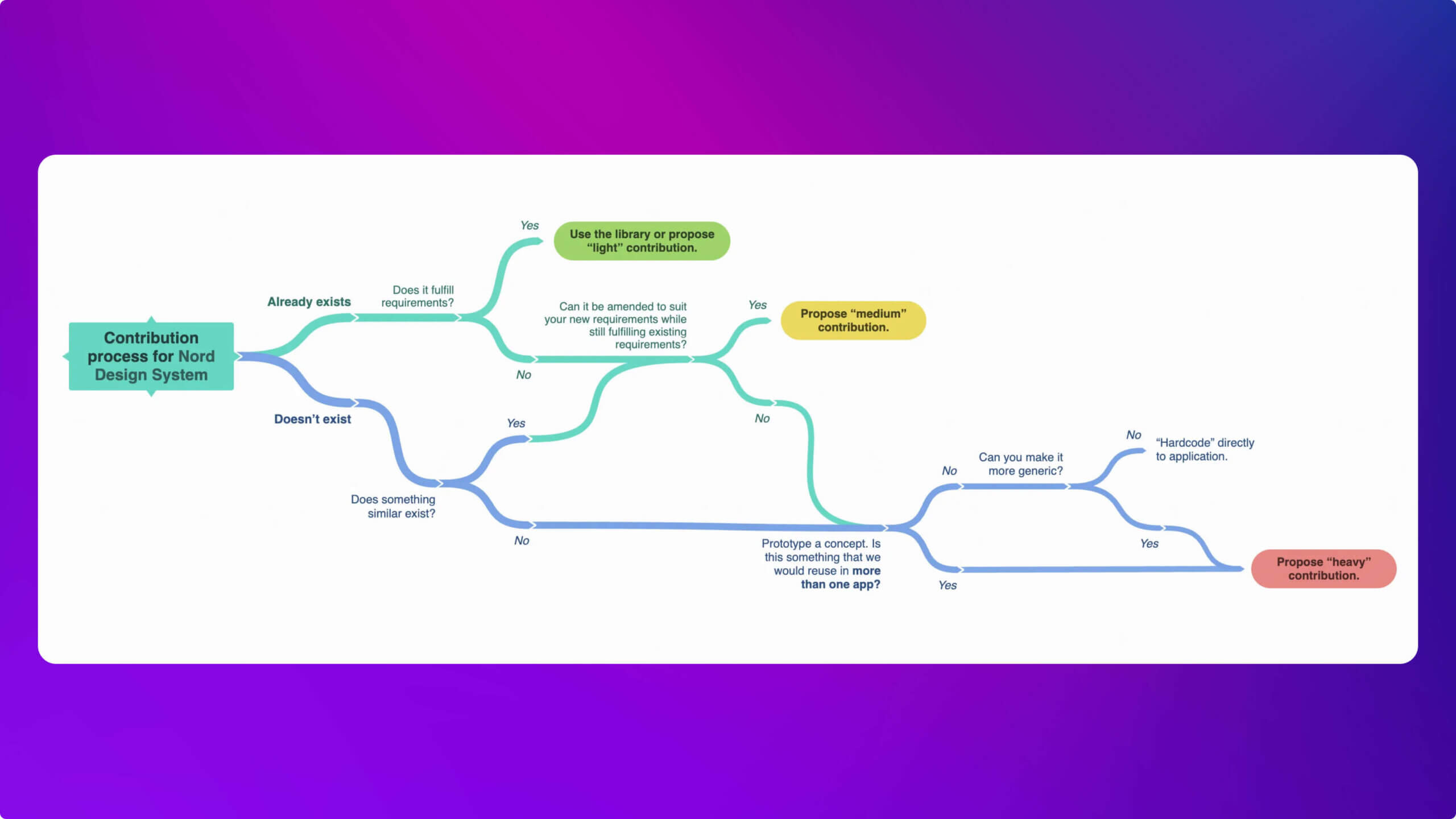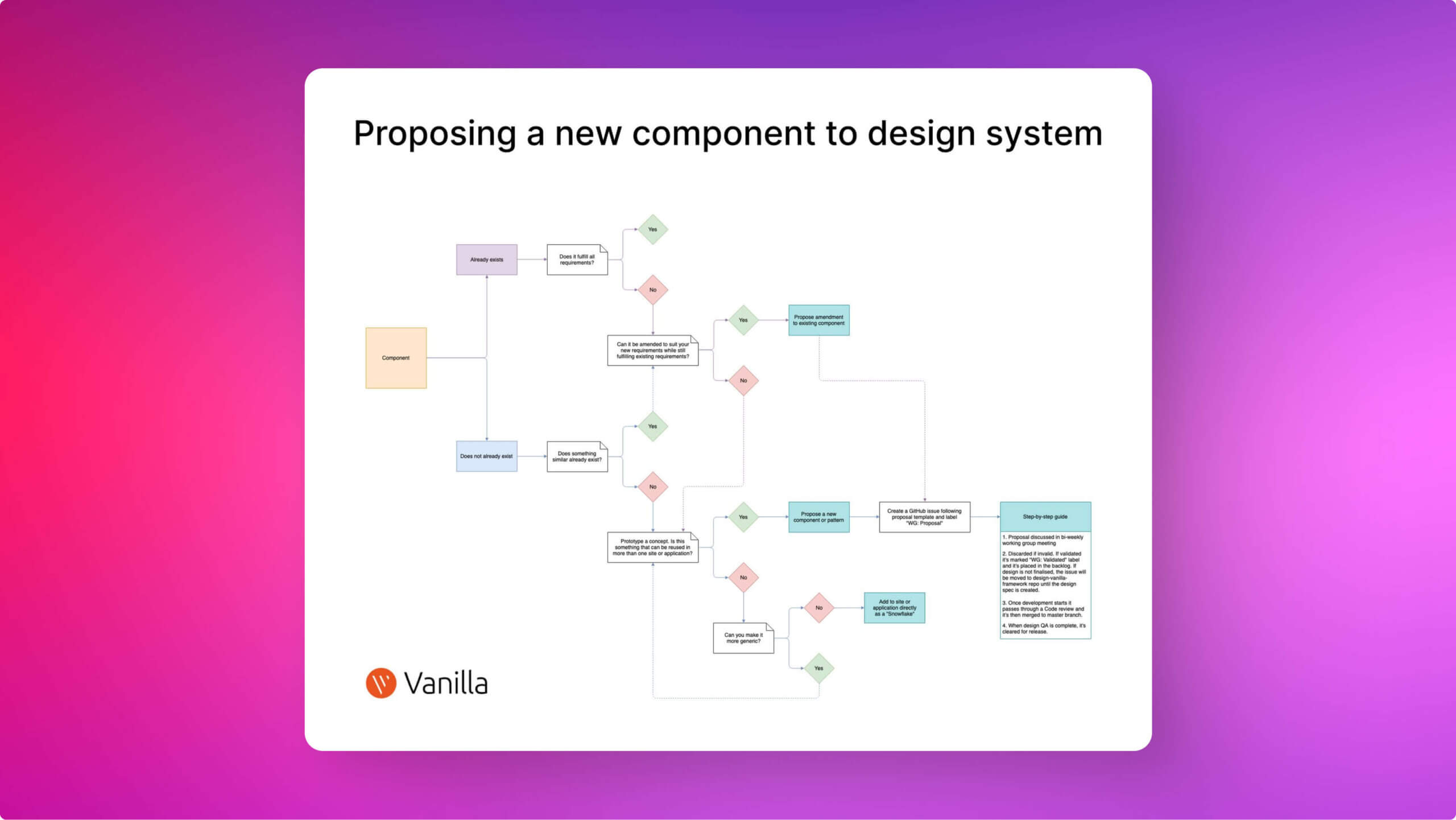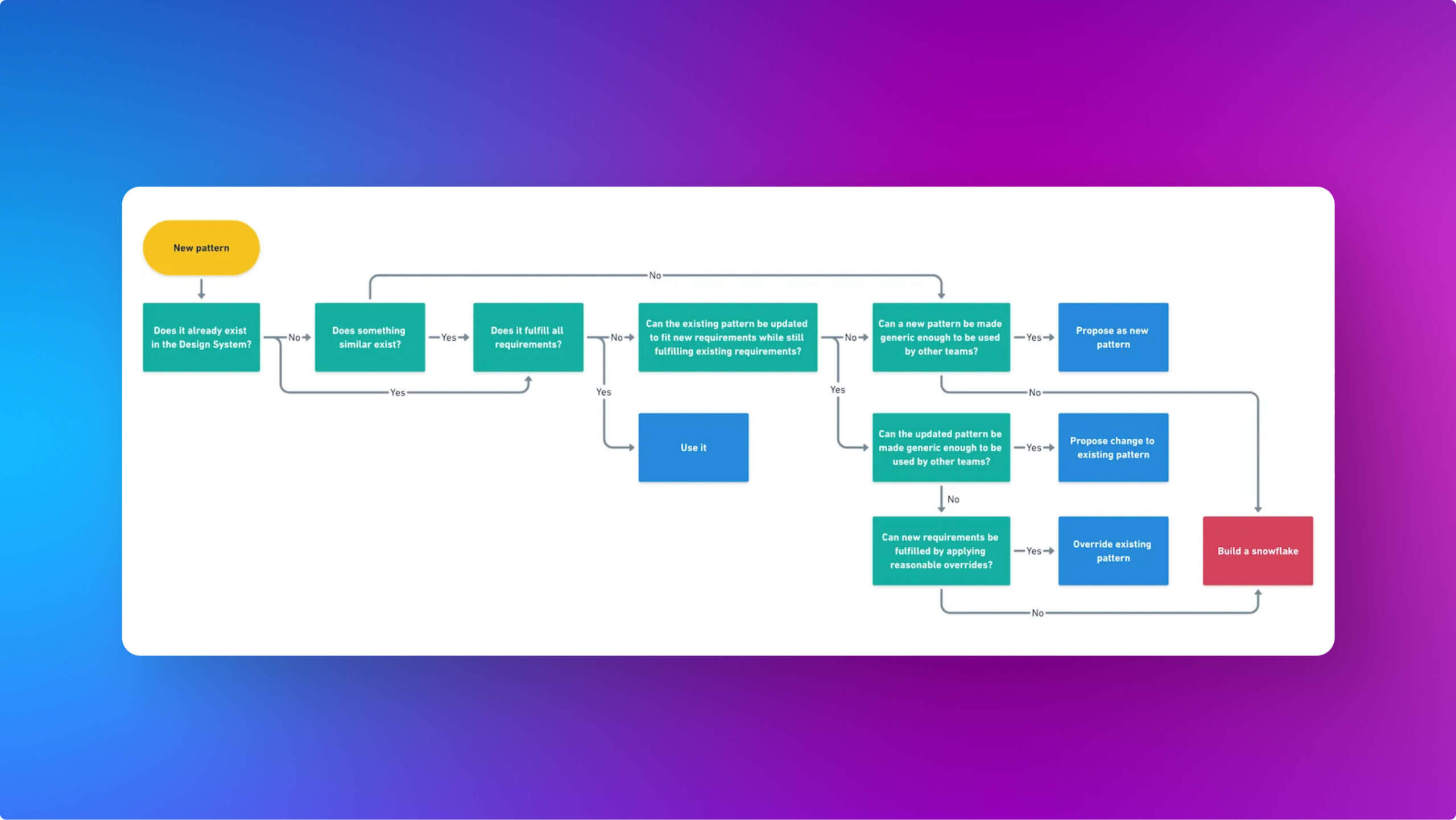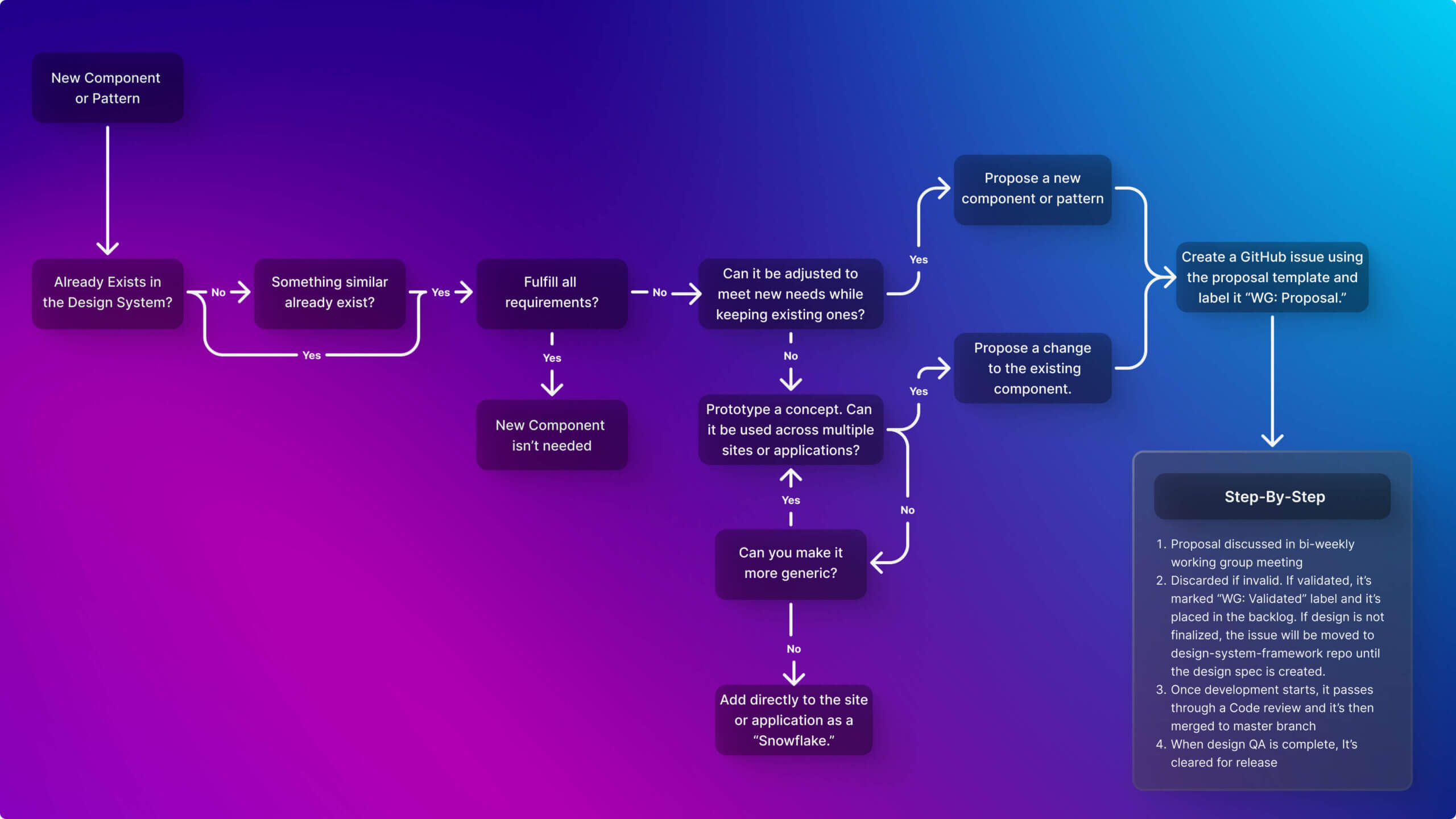Overview
Beyond creating design systems, I focus on governance and sustainability to ensure long-term success. This internal guide explores a structured approach to managing system growth, balancing consistency with flexibility, and fostering adoption across teams.
In the early days of any design system, things seem simple. A small team builds a handful of components, designers and developers use them, and everything feels manageable. But as the system grows, cracks begin to form.
A product team struggles to find the component they need. Another team tweaks an existing component because it does not quite fit their use case. Soon, multiple versions of the same button exist across different products, each slightly different and requiring separate maintenance.
What started as a well-intentioned system becomes fragmented and inconsistent. Teams bypass the system, and the core problem it was meant to solve, scalability and cohesion, begins to break down.
A healthy design system does not maintain itself. As Nick Babich emphasizes in his governance principles, “A design system without governance is just a shared repository.” To ensure longevity, we need a structured governance process that allows for innovation without sacrificing consistency.
This governance model draws on best practices from Nick Babich, Brad Frost’s Atomic Design, and UX Planet’s Design System Contribution Models while introducing a streamlined approach for evaluating, evolving, and maintaining a design system at scale.

Nord Healthcare Design System Contribution Model
Why Governance Matters
Imagine a team designing a new feature. They search for a suitable component but cannot find one that fully meets their needs. They have two options:
- Use an existing component but force it into a role it was not designed for.
- Build something custom outside the system.
Neither option is ideal. The first results in poor usability. The second leads to fragmentation, where multiple, slightly different versions of the same component appear across products.
A strong governance model prevents this by:
- Establishing a single source of truth for components
- Ensuring teams do not waste time reinventing solutions
- Maintaining consistency, accessibility, and scalability
Brad Frost’s Atomic Design framework provides a useful perspective here. By breaking down components into Atoms, Molecules, and Organisms, teams can ensure that reusable elements remain modular and adaptable. This philosophy underpins how governance decisions should be made.

Canonical’s Vanilla Design System Contribution Model

Pluralsight’s design system contribution models
A Governance Model That Works
Step 1: Using the System First
Product teams should begin with the existing design system whenever designing and building new work. The system should be the first stop, not an afterthought.
Step 2: Identifying Gaps
If a team’s needs are not met by existing components, the next step is to assess whether:
- A component can be adapted to fit their needs
- A new component is necessary
Step 3: Snowflake or System?
If new work is needed, teams must determine whether it is a “snowflake” that only applies to a unique use case or a scalable system component that benefits multiple teams.
Step 4: Validating Through Prototyping
Rather than immediately building a new component, teams should first prototype their concept. A validated prototype ensures the need is real and aligns with system principles before moving forward.
Step 5: Governance Review and Decision Tree
Proposed changes are submitted through a GitHub issue or a design repository, then reviewed in a bi-weekly governance meeting. Using a decision tree based on validated prototypes, stakeholders determine:
- Does this follow design system principles?
- Will this scale effectively across teams?
- Does this duplicate existing patterns?
This structured review prevents unnecessary components from entering the system while ensuring valuable additions move forward.
Step 6: Design, Development, and Testing
Once approved, the component moves through formal design and development, including:
- Accessibility checks
- Cross-browser testing
- Performance optimization
Step 7: Documentation and Release
A component is not truly part of the design system until it is documented. This includes:
- Style guide updates via Vanilla Design System or similar documentation frameworks
- Code and API documentation
- Usage guidelines and examples
Step 8: Adoption and Iteration
Once released, product teams integrate the component into their applications. Feedback loops ensure that if improvements are needed, they are incorporated back into the governance cycle.

A Hybrid of Canonical’s Vanilla Design System and Pluralsight’s design system contribution models
A Governance Model That Evolves With You
A design system is never “done.” It evolves alongside products, teams, and users. Without governance, it fractures and loses its value. With a structured process, it becomes a scalable, reliable foundation that empowers teams to move faster while maintaining consistency.
This governance model, built on Nick Babich’s governance principles, Brad Frost’s Atomic Design, and Canonica’s governance model, ensures that every component added to the system is:
- Thoughtfully designed
- Rigorously tested
- Widely adopted
By following this structured approach, we prevent chaos and create a highly functional, scalable ecosystem that empowers teams rather than slowing them down.
What started as a well-intentioned system becomes fragmented and inconsistent. Teams bypass the system, and the core problem it was meant to solve, scalability and cohesion, begins to break down.
At the end of the day, a design system is not just about components. It is about people, collaboration, and creating something greater than the sum of its parts.
Sources
- Nick Babich – Design System Governance Process
- Brad Frost – Atomic Design
- UX Planet – Design System Contribution Models


